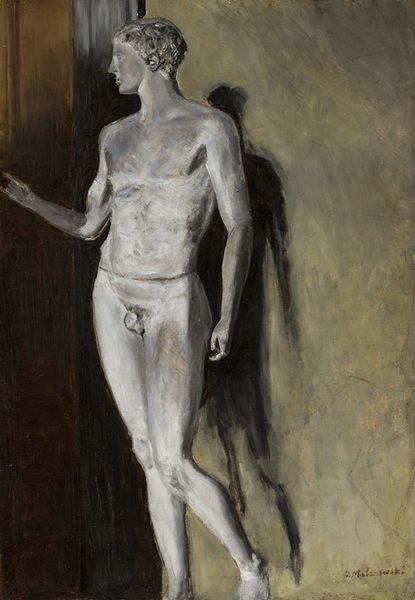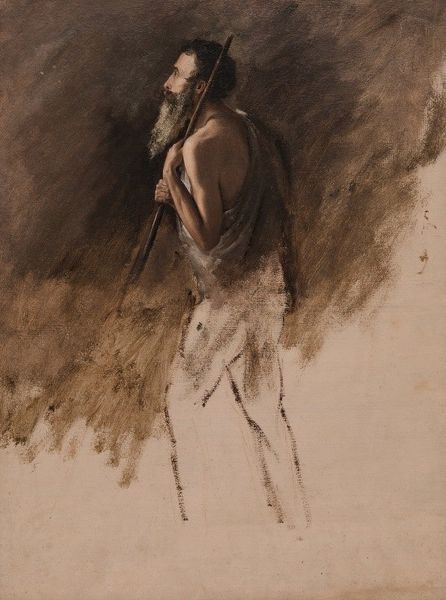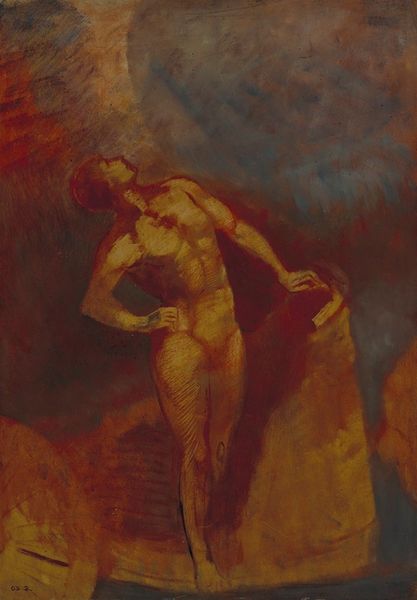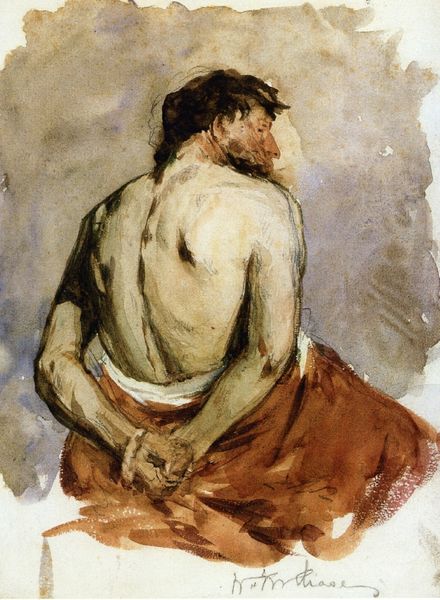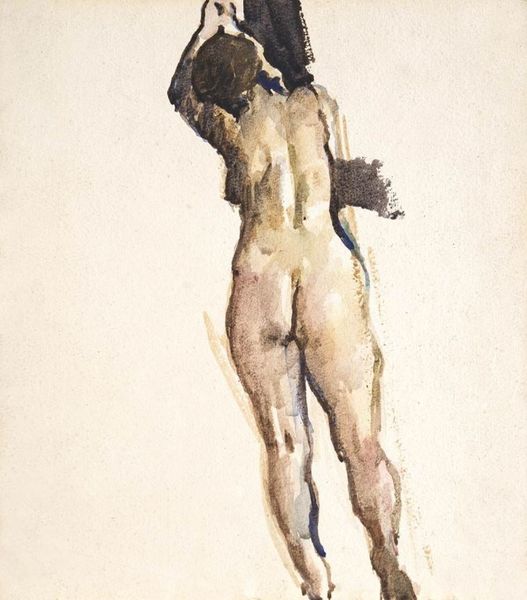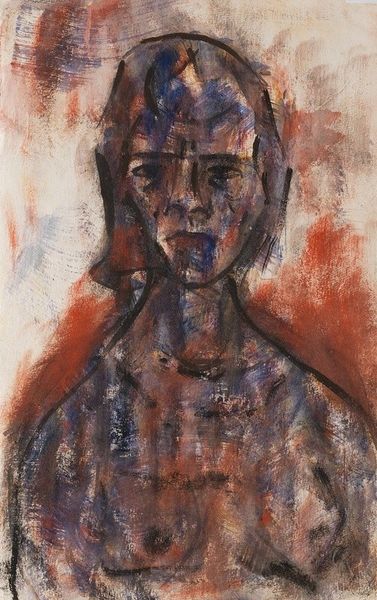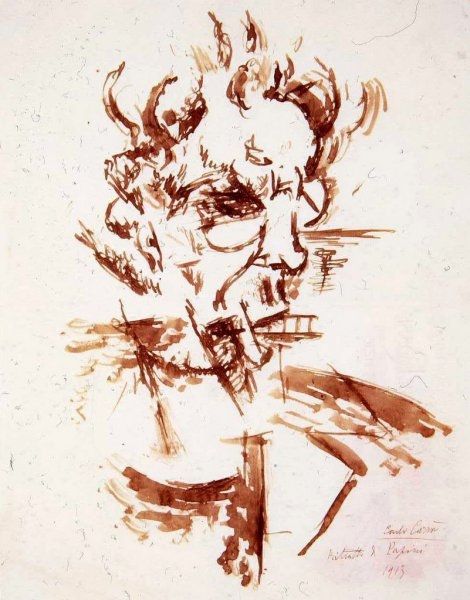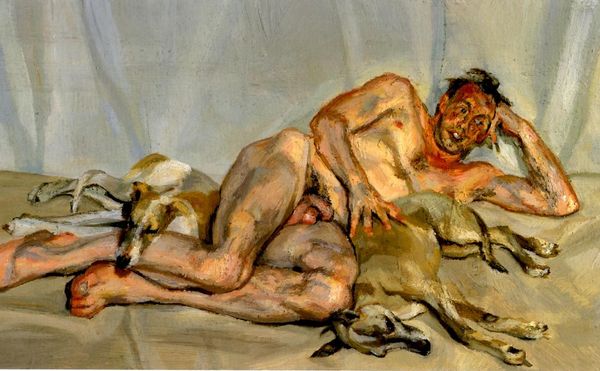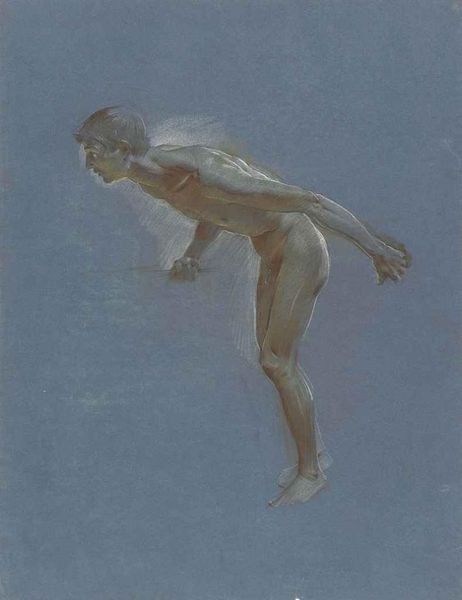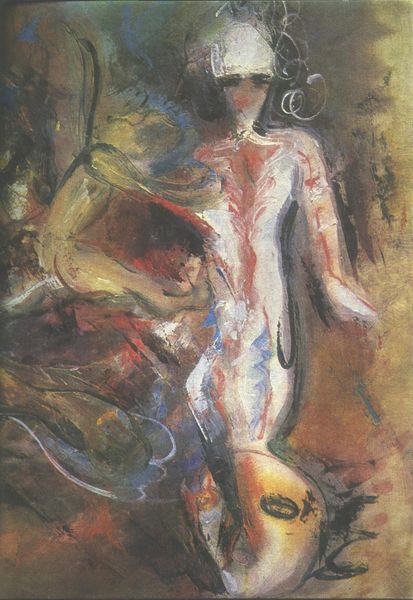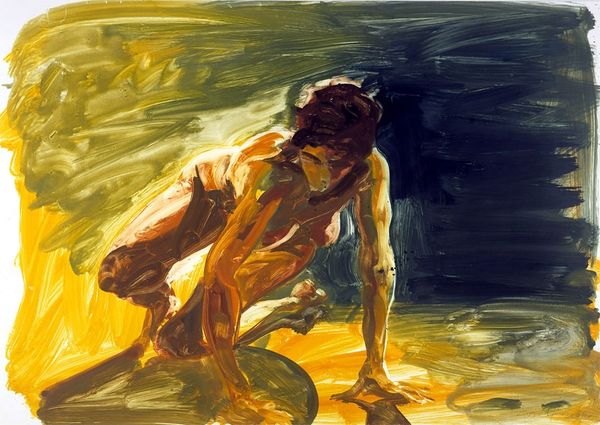
painting, watercolor, sculpture
#
portrait
#
painting
#
classical-realism
#
figuration
#
oil painting
#
watercolor
#
sculpture
#
portrait art
Copyright: Public domain
Editor: Here we have Konstantin Makovsky's "Portrait." The work is labeled as a painting that evokes sculpture and what feels like classical realism. There is such a wonderful unfinished quality about it that really captures the feeling of discovering ancient art. What stands out to you the most? Curator: The unfinished nature is exactly what catches my eye too. It is labelled as an oil painting, yet the wispy watercolour look undermines this assumption and makes us think about "original" artistic intent: was it the artist's decision for it to look unfinished and why did he decide that? What sort of societal commentary do you think it is making? Editor: It seems interesting to suggest that Makovsky is using medium and materials in ways that call attention to the production of art itself rather than just its aesthetic qualities. It also leads one to believe that he wants the sculpture to exist as itself, with limited, artistic input. But why is he undermining his own agency? Curator: Exactly! Now, if we examine the sculpture within the painting – notice the damage, the missing limbs. How does this then play with art consumption? Editor: I see what you mean; The deliberate, and curated appearance and lack of refinement. Its "flaws" might hint at challenging established definitions and conventional approaches toward traditional beauty and art creation. Curator: Yes, and by painting it rather than sculpting it, is he democratising or fetishizing its artistic value by creating something with mass-production potential? Something of monetary and commercial value, a common portrait... Editor: This piece really challenges the boundary between painting, sculpture, and social commentary; I hadn't considered its implications for material consumption! Curator: It is these things that make this a though-provoking work that engages more deeply when looked at through the context of materiality.
Comments
No comments
Be the first to comment and join the conversation on the ultimate creative platform.

